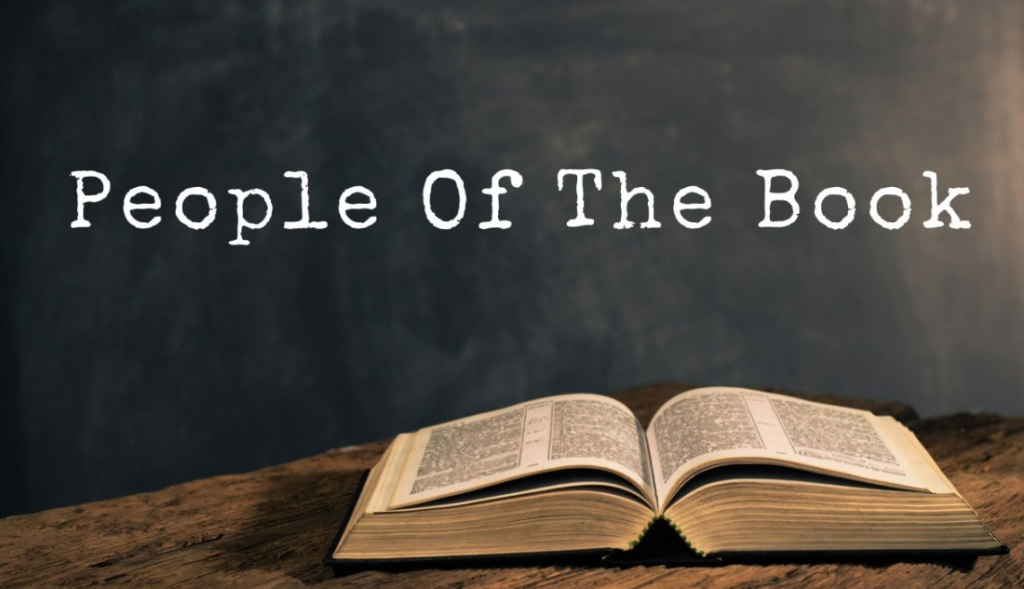Introduction to People of the Book

Overview of the Novel
Geraldine Brooks‘ People of the Book is a historical novel that weaves together the tale of a rare manuscript — the Sarajevo Haggadah — through centuries of Jewish, Christian, and Muslim history. The novel explores the journey of the Haggadah, a richly illustrated Jewish text, as it survives war, prejudice, and loss.Brooks meticulously explores the lives of those connected to this manuscript throughout history, presenting both their struggles and triumphs.
Author’s Background and Achievements

Geraldine Brooks, a Pulitzer Prize-winning author, is known for her skill in blending historical facts with fiction. Her journalism background, including reporting on international conflicts, gives her writing a deep sense of authenticity. People of the Book continues Brooks’ exploration of history through the lens of ordinary people living in extraordinary times.
Setting and Context of the Novel
The story takes place in multiple locations and periods, from 15th-century Spain to 20th-century Sarajevo. Each era and place is vital to understanding the manuscript’s survival and the cultures it touched. The novel moves fluidly across these timelines, shedding light on preserving knowledge during war and crisis.
The Structure of the Book
Brooks masterfully shifts between two narratives: one focusing on the modern-day book conservator, Hanna Heath, and the other following the Haggadah’s journey through various centuries. This layered storytelling offers a deep exploration of the people who risked their lives to protect the manuscript.
Plot Summary of People of the Book
The Sarajevo Haggadah: A Symbol of Cultural Heritage
At the heart of the novel is the Sarajevo Haggadah, a priceless Jewish manuscript that has survived centuries of turmoil. Discovered in Sarajevo, Bosnia, the Haggadah serves as a sign of religious tolerance and coexistence. Each chapter of the novel focuses on a different individual or family that played a role in the Haggadah’s history.
Origin of the Haggadah
Scholars believe that Jews, Christians, and Muslims in Spain created the Haggadah around the 14th century, during a time of relative peace. The book’s beautiful illustrations reflect the artistry and cultural exchanges of that era.
Its Journey Through History
As the novel progresses, the Haggadah passes through various hands: an Inquisition-era scribe, a Jewish refugee, a Muslim librarian, and more.Each chapter reveals the mysteries of how the manuscript survived persecution, fire, and war.
The Protagonist: Hanna Heath
Hanna Heath, an Australian book conservator, is the modern protagonist tasked with analyzing the Sarajevo Haggadah. As she uncovers small clues in the book— an insect wing, a wine stain, salt crystals— she pieces together the lives of those who once possessed it.
Her Role as a Conservationist
Hanna’s expertise in preserving ancient texts allows her to delve into the Haggadah’s hidden past. As she examines the book, she uncovers secrets about herself, including her strained relationship with her mother and her journey toward self-discovery.
Relationship to the Haggadah
Hanna’s connection to the Haggadah is both professional and personal. As she works on conserving the book, she becomes deeply invested in the lives of its past owners, forging an emotional bond that transcends time.
Important Events in the Novel
Each chapter of the novel offers a snapshot of history. From the Inquisition in Spain to the Nazi occupation of Europe, these historical flashbacks reveal how people of different faiths helped preserve the Haggadah.
Flashbacks to Different Eras
The novel’s alternating timelines are filled with suspense, as readers are taken back to key historical moments that threatened the manuscript’s existence. Each flashback provides a glimpse into how the Haggadah was safeguarded.
The Unveiling of Secrets in Each Time Period
Through Hanna’s discoveries, readers learn about the sacrifices made to protect this artifact. These clues allow the story to unfold in layers, drawing readers deeper into the Haggadah’s past.
Key Themes in People of the Book
Preservation of Cultural Heritage
One of the novel’s central themes is the preservation of cultural heritage in the face of destruction. It’s a testament to the resilience of human culture, enduring even the darkest periods of history.
The Power of Books and Artifacts
Books and artifacts, like the Haggadah, are more than historical objects— they are vessels of human knowledge, memory, and identity. The novel underscores the idea that preserving such items is vital for future generations.
Religious Tolerance and Coexistence
People of the Book emphasizes the importance of religious tolerance. Jews, Christians, and Muslims alike protected the Haggadah despite the tensions between different faiths throughout history. This message of coexistence is as relevant today as it was centuries ago.
The Haggadah’s Journey Through Different Faiths
As the Haggadah passes through various hands, each person who protects it does so out of a deep respect for its significance, regardless of their religion. This shared respect highlights the common humanity that transcends religious boundaries.
War and Its Impact on Cultural Memory
War plays a significant role in the novel, as it disrupts lives and threatens to erase cultural history. The Sarajevo Haggadah survived multiple conflicts, symbolizing the resilience of cultural memory in the face of destruction.
The Sarajevo Siege and Its Significance
The novel opens during the Sarajevo Siege, a key event that threatens the existence of the Haggadah.The destructive effects of war on both human life and cultural heritage are vividly brought to light by this siege.
Major Characters Analysis
Hanna Heath: The Modern-day Hero
Hanna is a skilled book conservator who uncovers the secrets of the Haggadah while also coming to terms with her own personal challenges. Her character reflects the tension between the modern world and the ancient texts she works with.
Her Relationship with Her Mother
A recurring subplot involves Hanna’s difficult relationship with her mother, an emotionally distant doctor. Through her work with the Haggadah, Hanna started understanding her personal history.
Professional Challenges
As a woman in a traditionally male-dominated field, Hanna faces professional challenges. Her determination to prove herself mirrors the struggles of the historical figures she uncovers in her research.
Historical Figures in the Story
The novel introduces readers to a wide cast of historical characters, each connected to the Haggadah in different ways. These figures range from Jewish scribes to Muslim librarians, all of whom play a role in preserving the manuscript.
The Bookbinder, the Priest, and the Refugee
Each historical figure brings a new perspective to the story of the Haggadah. Their individual stories reflect the novel’s themes of survival, tolerance, and the shared human experience.
How Their Stories Connect
Though separated by centuries, these characters connect through their dedication to protecting the Haggadah. Their stories weave together to form a tapestry of human endurance and cultural preservation.
Critical Reception of People of the Book
Praise and Critique from Literary Experts
People of the Book has been widely praised for its intricate storytelling and deep historical research. Critics have applauded Brooks’ ability to bring history to life through the lens of an ancient manuscript.
Focus on the Historical Elements
Brooks’ commitment to historical accuracy adds depth to the novel, making it not only a compelling story but also a valuable exploration of world history.
The Novel’s Emotional Resonance
Beyond its historical significance, the novel is deeply emotional. It explores personal loss, identity, and the shared struggles of humanity, leaving readers with a lasting impact.
Awards and Accolades
People of the Book has earned critical acclaim and was shortlisted for several literary awards. It continues to be a beloved book for its powerful narrative and thoughtful exploration of history.
Conclusion
The Sarajevo Haggadah is an actual historical artifact that inspired the novel. Its story of survival through centuries of turmoil is a testament to the resilience of human culture. During the Bosnian War, someone rediscovered the Haggadah, hidden away in Sarajevo’s national museum. Its recovery was a symbol of hope amid destruction. Today, the Sarajevo Haggadah remains a vital symbol of tolerance, history, and the power of preserving cultural heritage. It continues to inspire efforts to protect historical artifacts worldwide.
